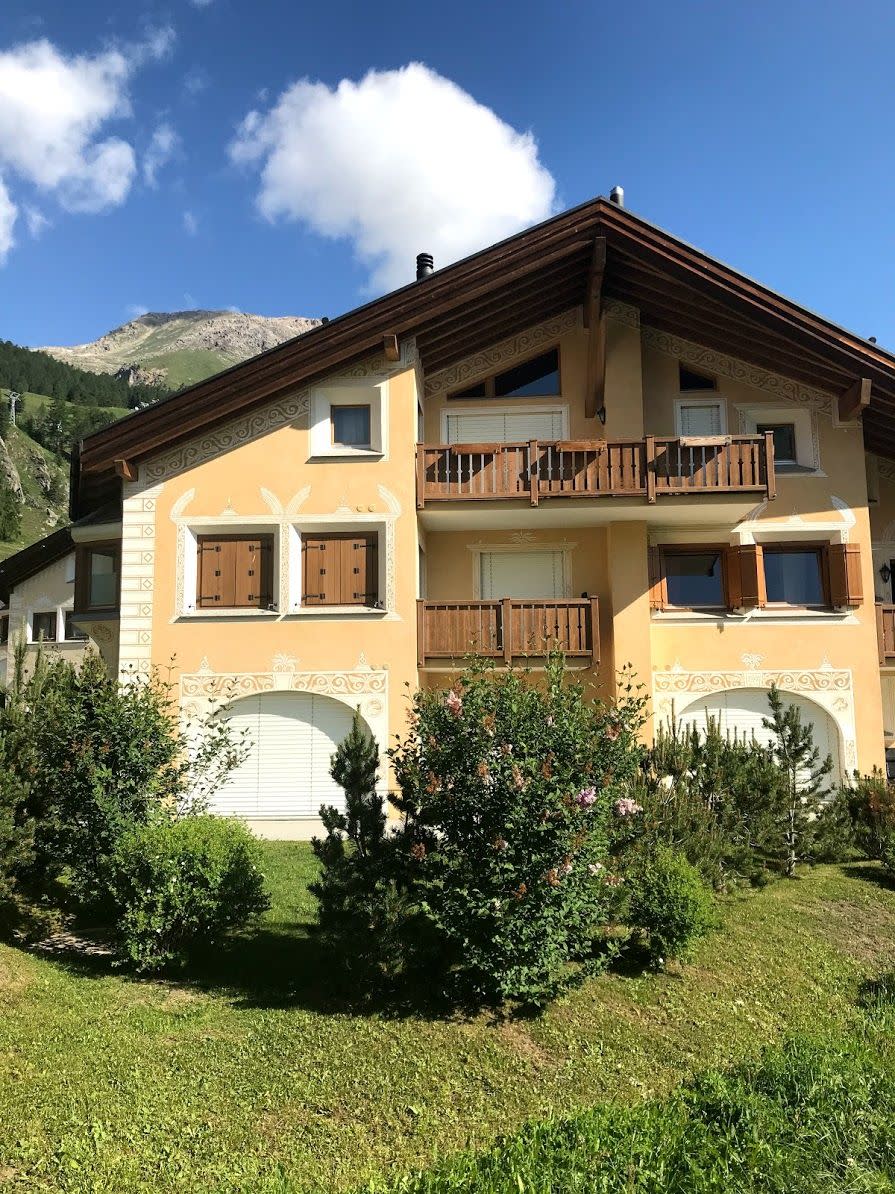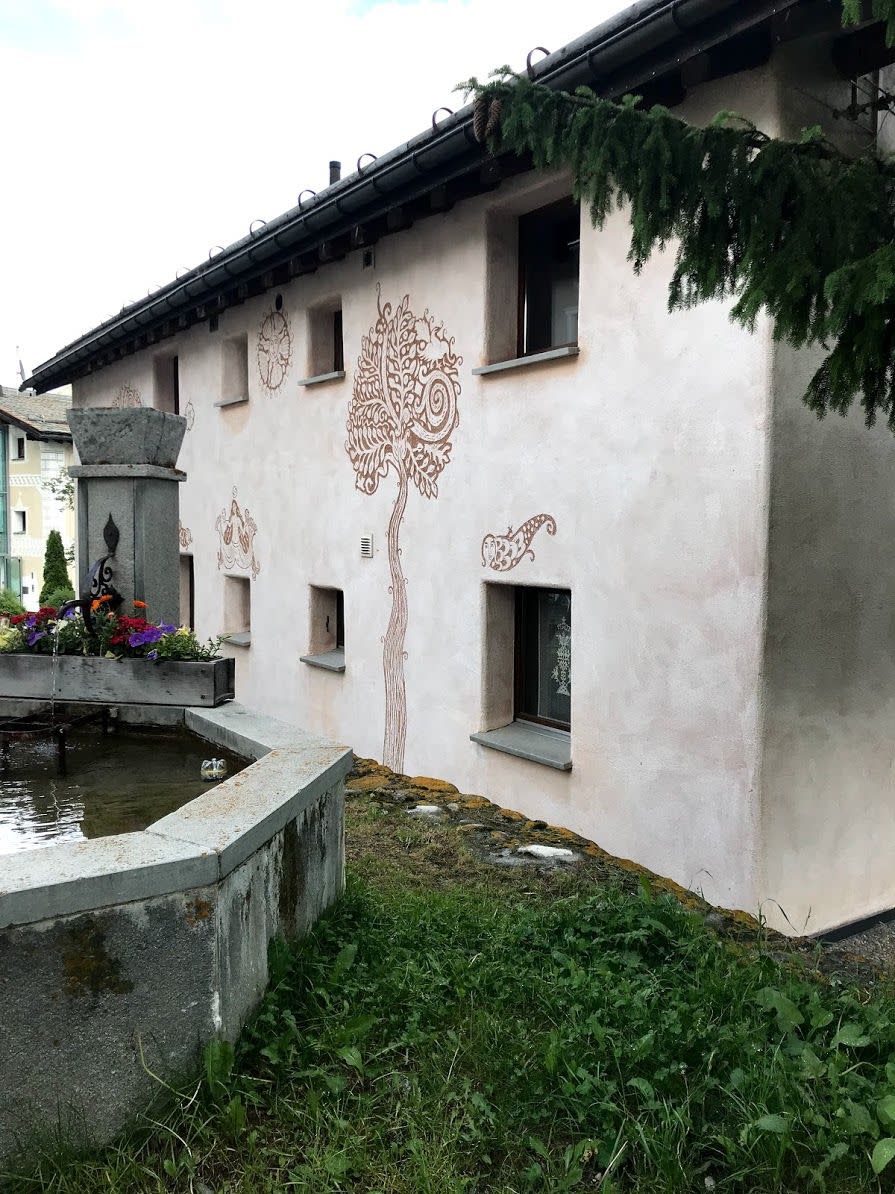The Photos of These Delightfully Painted Houses Will Make You Ludicrously Happy

In the Engadin, the alpine region of Switzerland where towns pulled from postcards are nestled between jaw-dropping mountains and cows with bells around their necks roam seemingly freely through lush, green fields, there's hardly any shortage of beauty. But while most flock to the Engadin (or Engadine, depending if you ask a Swiss or German speaker; in the local Romansch it's "Engiadina") for the natural surroundings or the inimitable hospitality options, there's also a delightfully quirky, centuries-old design tradition native to the region that almost warrants a visit on its own.


Walk down the street in any Engadin town—I, personally, chose a morning walk through Cerelina, and a trip to Madulain, a village settled in the 13th century—and you'll notice, at first glance, what appear to be a wide array of decorative moldings on its buildings. Take a step closer, though, and you'll realize that what first appear to be three-dimensional architectural details are, in fact, trompe l'oeil designs painted onto the homes' stucco exteriors.

According to a 1988 New York Times travel piece on the region, the distinctive method of exterior painting grew popular in the 16th century as a means of replicating the ornate (and three-dimensional) architectural detailing popular in neighboring Italy, where the Renaissance was seeing the construction of artful new palazzi.

The earliest paintings were done in the sgraffito technique, where a light layer of plaster is applied over a darker one and then scraped off to create patterns with the color underneath (think large-scale scratch art).

Incredibly, many of the 15th and 16th century houses in the region are still standing, and since then, the region's homeowners expanded from architectural details to all manner of decoration: One home has a swirling, paisley pattern in a Tree-of-Life shape; another features smiling, long-haired figures framed in a geometric border. There are pink houses with brown-and-white checkerboard patterns arching over their doorways, red houses with white trimming their windows, orange houses with white imitation brick running up their sides.

Each house, it seems, is a canvas for creative expression, the façades not limited to one color. And for good reason; why should the interiors have all the fun? If we paint and decorate and hang art on our living room walls, why not ornament the exteriors for the world to see?
Follow House Beautiful on Instagram.
You Might Also Like

